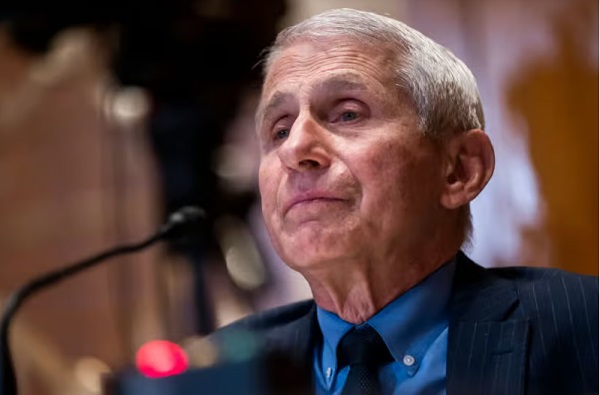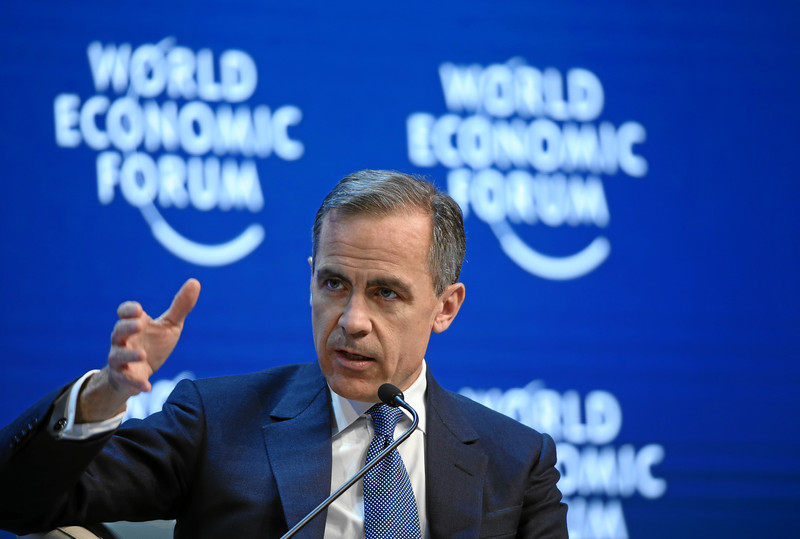Brownstone Institute
The Propaganda Model Has Limits

From the Brownstone Institute
Normally, I let my pen rest during the summer months, but for some things, you set aside your habits. What has been happening in the context of the US presidential elections over the past few weeks is, to say the least, remarkable. We are witnessing a social system that – to use a term from complex dynamic systems theory – is heading toward a catastrophe. And the essence of the tipping point we are approaching is this: the propaganda model is beginning to fail.
It started a few weeks ago like this: Trump, the presidential candidate who must not win, is up against Biden, the presidential candidate who must win. After the first debate, it was immediately clear: Trump will win against Biden. The big problem: Biden and Jill are about the only ones who don’t realize this.
The media then turned against Biden. That, in itself, is a revolution. They had praised President Biden to the skies for four years, turning a blind eye to the fact that the man either seemed hardly aware of what he was saying or was giving speeches that could only be described as having the characteristics of a fascist’s discourse.
I’m thinking, among other things, of the 2022 midterm speech in which he, against a bombastic-dramatic backdrop and flanked by two soldiers with machine guns, more or less directly called for violence against the Maga followers. Not to mention the shameless prosecution and imprisonment of political opponents and the intimidation and excommunication of hundreds of journalists (carefully kept out of the media by journalists who sided with the regime).
Huxley would not be surprised that Biden claims in almost every speech that he had to save democracy, including his most recent speech. I’ve shared the quote of Huxley below before, but it doesn’t hurt to read it a second time:
By means of ever more effective methods of mind-manipulation, the democracies will change their nature; the quaint old forms — elections, parliaments, Supreme Courts and all the rest — will remain. The underlying substance will be a new kind of non-violent totalitarianism. All the traditional names, all the hallowed slogans will remain exactly what they were in the good old days. Democracy and freedom will be the theme of every broadcast and editorial — but democracy and freedom in a strictly Pickwickian sense. Meanwhile the ruling oligarchy and its highly trained elite of soldiers, policemen, thought-manufacturers and mind-manipulators will quietly run the show as they see fit.
Huxley, Brave New World Revisited
In any case, the media’s love for Biden was suddenly over when it became clear that he could not possibly win the election, even not with a little help from the media. If you want to know how that ‘little help’ worked in 2020, look at one of the most important interviews of the past year, where Mike Benz – former director of the cyber portfolio of the US government – explains to Tucker Carlson in detail how information flows on the internet were manipulated during the 2020 elections (and the Covid crisis). The guy eventually got disgusted with what he was doing and now runs a project striving for online freedom of speech. I would recommend everyone to spend an hour watching that interview. Such an explanation is what we need: calm, expert, nuanced, and extraordinarily revealing.
After the first debate, the media realized that even they could not help Biden win the election. They changed their approach. Biden was quickly stripped of his saintly status. The Veil of Appearances was pulled away, and he suddenly stood naked and vulnerable in the eye of the mainstream – a man in the autumn of his life, mentally confused, addicted to power, and arrogant. Some journalists even started attributing traits of the Great Narcissistic Monster Trump to him.
But even media pressure couldn’t make Biden change his mind. He was so far gone that he did not see the hopelessness of his situation. That did not change when the Democratic elite turned their backs on him. Barack, Hillary, Nancy – it didn’t matter, the presidential candidate who couldn’t win kept stumbling in a lost race.
Then things took another turn, a turn so predictable that one is astonished that it actually happened. An overaged teenager calmly climbed onto a roof with a sniper rifle, under the watchful eyes of the security services, and nearly shot Trump in the head. The security services, which initially did not respond for minutes when people tried to draw attention to the overaged teenager with an assault rifle, suddenly reacted decisively: they shot the overaged teenager dead seconds after the assassination attempt.
What happened there? There are many reasons to have reservations about Trump, but one thing we cannot help but say: if Trump becomes president, the war in Ukraine will be over. Anyone who does not attribute any weight to that should subject themselves to a conscience examination. And no, Trump will not have to give half of Europe to Putin for that. My cautious estimate, for what it’s worth: It will suffice for NATO to stop and partially reverse its eastward expansion, for Russia to retain access to the Black Sea via Crimea (something everyone with historical awareness knows that denying would mean the death blow to Russia as a great power and thus a direct declaration of war), and for the population of the Russian-speaking part of Ukraine to choose in a referendum whether to belong to Russia or Ukraine.
One of the biggest and most dangerous media lies of this time is that Putin started an ‘unprovoked war’ in Ukraine. I recommend a second interview by Tucker Carlson here (undoubtedly one of the most important contemporary journalists, one of the few who still fulfill the original societal function of journalism). The interview with professor and former top diplomat Jeffrey Sachs also has everything a good interview should have: given with great expertise, calm, and nuanced. Anyone who still believes that the war in Ukraine was ‘unprovoked’ after listening to it is kindly invited to explain themselves in the comments section of this article.
So, I repeat my point: with Trump, the provocation of Russia stops, and the war in Ukraine ends. Presidents who threaten to end wars are sometimes shot at by lone gunmen. And those lone gunmen are, in turn, shot dead. And the archives about that remarkable act of lone gunmen sometimes remain sealed for a remarkably long time, much longer than they usually do.
The media ultimately covered this historical event of the Trump assassination attempt surprisingly lightly. No journalist to be found pointed a finger at Biden because he had more or less literally called to ‘target’ Trump a few months earlier. Let alone the media admitting that they created the unspoken support in the population for this political violence. Neither did I find journalists who were greatly concerned that the overaged teenager was linked to Antifa – nothing wrong with Antifa according to them. I can imagine that the moral appreciation would have been different if an overaged teenager linked to the Maga movement had nearly taken down President Biden.
Anyway, we are not surprised. That reaction was predictable. We are used to the media. Some journalists even suggested that Trump had been shot with a paintball, others thought the most accurate way to report was that someone ‘wounded Trump on the ear.’
In any case, after the assassination attempt, the situation became even more dire for the mainstream: the presidential candidate who must not win is now even more popular, and his victory in a race with Biden is almost inevitable.
Then the next chapter begins. Biden suddenly changes his mind: he has come to his senses and drops out of the race. He announces this – of all things – in a letter with a signature that, even for his shaky condition, looked quite clumsy. Then he stayed out of the public eye for a few days. We are curious about what exactly happened there.
But the media are compliant again. Biden has now been sanctified again. Just like Kamala Harris, of course. They are already mentioning polls showing she will beat Trump. With a little help from the media, of course. Curious how this will continue, but I would be surprised if the rest of the campaign will be a walk in the park. Trump is not safe after the first attempt, that’s for sure. And to Kamala Harris, I say this: when totalitarian systems go into a chaotic phase, they become monsters that devour their own children.
It is hard to ignore: the indoctrination and propaganda model is creaking and groaning at all its seams. The Veil of Appearances that is meant to hide all dirty laundry from the public eye is tearing left and right. And that’s why the step toward terror is increasingly being taken. One can see something frightening in it, but it also heralds the beginning of the end of the propaganda model. No one knows exactly how long the endgame will last, but it is certain that the system is in deep crisis. From the fact that the Democrats ran with someone like Biden and then had to force him out in this amateurish and transparent manner, we can only conclude one thing with certainty: the desperation must be enormous.
What we are witnessing is nothing less than the failure of the greatest propaganda apparatus in history. And at that point, we also see a fact that people absorbed by conspiracy thinking make: they overestimate the perceived enemy not only as too evil but also (much) too powerful. In this way, one can only feel smaller and feel more and more powerlessness, anger, and hate, exactly the sentiments that will prove deadly in the coming years.
The general reduction of everything that happens to a conspiracy, not seeing a Reality behind the manipulation and illusions created, is itself a symptom of this time. Conspiracies exist. No one needs to convince me of that. And one problem of this time is that most people who identify with the mainstream discourse have a remarkable ability to deny that. And they have an equally great ability to ignore that they themselves eagerly produce conspiracy theories when it comes to Putin or Saddam Hussein or ‘extreme right.’
Conspiracy theories sometimes correctly relate to facts, and sometimes incorrectly. However, they do not provide a comprehensive explanation for global events. They do not touch the essence of the problem. The essence of the problem lies in rationalism and the associated human arrogance. And this hubris is certainly not the privilege of ‘the elite.’ It is even typical of conspiracy thinking itself, which ultimately attempts to capture the essence of social dynamics through a rationalistic construction. And precisely because of this, conspiracy thinking, just like the dominant discourse, falls prey to Babylonian confusion. Like the dominant discourse, they fail to bring true peace regarding the Real that increasingly imposes itself from behind the Veil of Appearances in this historical era.
In times when America is dangerously heading towards a civil war, the golden advice is: do not be tempted by the possibility of violence. Stay calm and composed. And continue to speak. Totalitarianism dehumanizes; the only remedy against totalitarianism is to always recognize a human being in the Other. Also in the Totalitarian Other. What is happening is historical. Stand on the right side of history. This is not the side of the Democrats or the side of the Republicans, it is not the side of Trump or the side of Harris; it is the side of humanity, it is the side of those who are not so convinced of their own words that they can no longer find any space for the words of the Other to exist.
Republished from the author’s Substack
Brownstone Institute
Anthony Fauci Gets Demolished by White House in New Covid Update

From the Brownstone Institute
By
Anthony Fauci must be furious.
He spent years proudly being the public face of the country’s response to the Covid-19 pandemic. He did, however, flip-flop on almost every major issue, seamlessly managing to shift his guidance based on current political whims and an enormous desire to coerce behavior.
Nowhere was this more obvious than his dictates on masks. If you recall, in February 2020, Fauci infamously stated on 60 Minutes that masks didn’t work. That they didn’t provide the protection people thought they did, there were gaps in the fit, and wearing masks could actually make things worse by encouraging wearers to touch their face.
Just a few months later, he did a 180, then backtracked by making up a post-hoc justification for his initial remarks. Laughably, Fauci said that he recommended against masks to protect supply for healthcare workers, as if hospitals would ever buy cloth masks on Amazon like the general public.
Later in interviews, he guaranteed that cities or states that listened to his advice would fare better than those that didn’t. Masks would limit Covid transmission so effectively, he believed, that it would be immediately obvious which states had mandates and which didn’t. It was obvious, but not in the way he expected.

And now, finally, after years of being proven wrong, the White House has officially and thoroughly rebuked Fauci in every conceivable way.
White House Covid Page Points Out Fauci’s Duplicitous Guidance
A new White House official page points out, in detail, exactly where Fauci and the public health expert class went wrong on Covid.
It starts by laying out the case for the lab-leak origin of the coronavirus, with explanations of how Fauci and his partners misled the public by obscuring information and evidence. How they used the “FOIA lady” to hide emails, used private communications to avoid scrutiny, and downplayed the conduct of EcoHealth Alliance because they helped fund it.
They roast the World Health Organization for caving to China and attempting to broaden its powers in the aftermath of “abject failure.”
“The WHO’s response to the COVID-19 pandemic was an abject failure because it caved to pressure from the Chinese Communist Party and placed China’s political interests ahead of its international duties. Further, the WHO’s newest effort to solve the problems exacerbated by the COVID-19 pandemic — via a “Pandemic Treaty” — may harm the United States,” the site reads.
Social distancing is criticized, correctly pointing out that Fauci testified that there was no scientific data or evidence to support their specific recommendations.
“The ‘6 feet apart’ social distancing recommendation — which shut down schools and small business across the country — was arbitrary and not based on science. During closed door testimony, Dr. Fauci testified that the guidance ‘sort of just appeared.’”
There’s another section demolishing the extended lockdowns that came into effect in blue states like California, Illinois, and New York. Even the initial lockdown, the “15 Days to Slow the Spread,” was a poorly reasoned policy that had no chance of working; extended closures were immensely harmful with no demonstrable benefit.
“Prolonged lockdowns caused immeasurable harm to not only the American economy, but also to the mental and physical health of Americans, with a particularly negative effect on younger citizens. Rather than prioritizing the protection of the most vulnerable populations, federal and state government policies forced millions of Americans to forgo crucial elements of a healthy and financially sound life,” it says.
Then there’s the good stuff: mask mandates. While there’s plenty more detail that could be added, it’s immensely rewarding to see, finally, the truth on an official White House website. Masks don’t work. There’s no evidence supporting mandates, and public health, especially Fauci, flip-flopped without supporting data.
“There was no conclusive evidence that masks effectively protected Americans from COVID-19. Public health officials flipped-flopped on the efficacy of masks without providing Americans scientific data — causing a massive uptick in public distrust.”
This is inarguably true. There were no new studies or data justifying the flip-flop, just wishful thinking and guessing based on results in Asia. It was an inexcusable, world-changing policy that had no basis in evidence, but was treated as equivalent to gospel truth by a willing media and left-wing politicians.
Over time, the CDC and Fauci relied on ridiculous “studies” that were quickly debunked, anecdotes, and ever-shifting goal posts. Wear one cloth mask turned to wear a surgical mask. That turned into “wear two masks,” then wear an N95, then wear two N95s.
All the while ignoring that jurisdictions that tried “high-quality” mask mandates also failed in spectacular fashion.

And that the only high-quality evidence review on masking confirmed no masks worked, even N95s, to prevent Covid transmission, as well as hearing that the CDC knew masks didn’t work anyway.
The website ends with a complete and thorough rebuke of the public health establishment and the Biden administration’s disastrous efforts to censor those who disagreed.
“Public health officials often mislead the American people through conflicting messaging, knee-jerk reactions, and a lack of transparency. Most egregiously, the federal government demonized alternative treatments and disfavored narratives, such as the lab-leak theory, in a shameful effort to coerce and control the American people’s health decisions.
When those efforts failed, the Biden Administration resorted to ‘outright censorship—coercing and colluding with the world’s largest social media companies to censor all COVID-19-related dissent.’”
About time these truths are acknowledged in a public, authoritative manner. Masks don’t work. Lockdowns don’t work. Fauci lied and helped cover up damning evidence.
If only this website had been available years ago.
Though, of course, knowing the media’s political beliefs, they’d have ignored it then, too.
Republished from the author’s Substack
Brownstone Institute
RCMP seem more interested in House of Commons Pages than MP’s suspected of colluding with China

From the Brownstone Institute
By
Canadians shouldn’t have information about their wayward MPs, but the RCMP can’t have too much biometric information about regular people. It’s always a good time for a little fishing. Let’s run those prints, shall we?
Forget the members of Parliament who may have colluded with foreign governments. The real menace, the RCMP seem to think, are House of Commons pages. MPs suspected of foreign election interference should not be identified, the Mounties have insisted, but House of Commons staff must be fingerprinted. Serious threats to the country are hidden away, while innocent people are subjected to state surveillance. If you want to see how the managerial state (dys)functions, Canada is the place to be.
In June, the National Security and Intelligence Committee of Parliamentarians (NSICOP) tabled its redacted report that suggested at least 11 sitting MPs may have benefitted from foreign election interference. RCMP Commissioner Mike Duheme cautioned against releasing their identities. Canadians remained in the dark until Oct. 28 when Kevin Vuong, a former Liberal MP now sitting as an Independent, hosted a news conference to suggest who some of the parliamentarians may be. Like the RCMP, most of the country’s media didn’t seem interested.
But the RCMP are very interested in certain other things. For years, they have pushed for the federal civil service to be fingerprinted. Not just high security clearance for top-secret stuff, but across government departments. The Treasury Board adopted the standard in 2014 and the House of Commons currently requires fingerprinting for staff hired since 2017. The Senate implemented fingerprinting this year. The RCMP have claimed that the old policy of doing criminal background checks by name is obsolete and too expensive.
But stated rationales are rarely the real ones. Name-based background checks are not obsolete or expensive. Numerous police departments continue to use them. They do so, in part, because name checks do not compromise biometric privacy. Fingerprints are a form of biometric data, as unique as your DNA. Under the federal Identification of Criminals Act, you must be in custody and charged with a serious offence before law enforcement can take your prints. Canadians shouldn’t have information about their wayward MPs, but the RCMP can’t have too much biometric information about regular people. It’s always a good time for a little fishing. Let’s run those prints, shall we?
It’s designed to seem like a small deal. If House of Commons staff must give their fingerprints, that’s just a requirement of the job. Managerial bureaucracies prefer not to coerce directly but to create requirements that are “choices.” Fingerprints aren’t mandatory. You can choose to provide them or choose not to work on the Hill.
Sound familiar? That’s the way Covid vaccine mandates worked too. Vaccines were never mandatory. There were no fines or prison terms. But the alternative was to lose your job, social life, or ability to visit a dying parent. When the state controls everything, it doesn’t always need to dictate. Instead, it provides unpalatable choices and raises the stakes so that people choose correctly.
Government intrudes incrementally. Digital ID, for instance, will be offered as a convenient choice. You can, if you wish, carry your papers in the form of a QR code on your phone. Voluntary, of course. But later there will be extra hoops to jump through to apply for a driver’s licence or health card in the old form.
Eventually, analogue ID will cost more, because, after all, digital ID is more automated and cheaper to run. Some outlets will not recognize plastic identification. Eventually, the government will offer only digital ID. The old way will be discarded as antiquated and too expensive to maintain. The new regime will provide the capacity to keep tabs on people like never before. Privacy will be compromised without debate. The bureaucracy will change the landscape in the guise of practicality, convenience, and cost.
Each new round of procedures and requirements is only slightly more invasive than the last. But turn around and find you have travelled a long way from where you began. Eventually, people will need digital ID, fingerprints, DNA, vaccine records, and social credit scores to be employed. It’s not coercive, just required for the job.
Occasionally the curtain is pulled back. The federal government unleashed the Emergencies Act on the truckers and their supporters in February 2022. Jackboots in riot gear took down peaceful protesters for objecting to government policy. Authorities revealed their contempt for law-abiding but argumentative citizens. For an honest moment, the government was not incremental and insidious, but enraged and direct. When they come after you in the streets with batons, at least you can see what’s happening.
We still don’t know who colluded with China. But we can be confident that House of Commons staffers aren’t wanted for murder. The RCMP has fingerprints to prove it. Controlling the people and shielding the powerful are mandates of the modern managerial state.
Republished from the Epoch Times
-

 Bruce Dowbiggin5 hours ago
Bruce Dowbiggin5 hours agoWhat Connor Should Say To Oilers: It’s Not You. It’s Me.
-

 Business6 hours ago
Business6 hours agoFederal fiscal anchor gives appearance of prudence, fails to back it up
-

 Business4 hours ago
Business4 hours agoThe Passage of Bill C-5 Leaves the Conventional Energy Sector With as Many Questions as Answers
-

 Alberta2 hours ago
Alberta2 hours agoAlberta poll shows strong resistance to pornographic material in school libraries
-

 Crime1 hour ago
Crime1 hour agoFlorida rescues 60 missing kids in nation’s largest-ever operation
-

 Business24 mins ago
Business24 mins agoCanada should already be an economic superpower. Why is Canada not doing better?
-

 Banks3 hours ago
Banks3 hours agoScrapping net-zero commitments step in right direction for Canadian Pension Plan
-

 Business1 day ago
Business1 day agoBehind the latest CPI Numbers: Inflation Slows, But Living Costs Don’t





